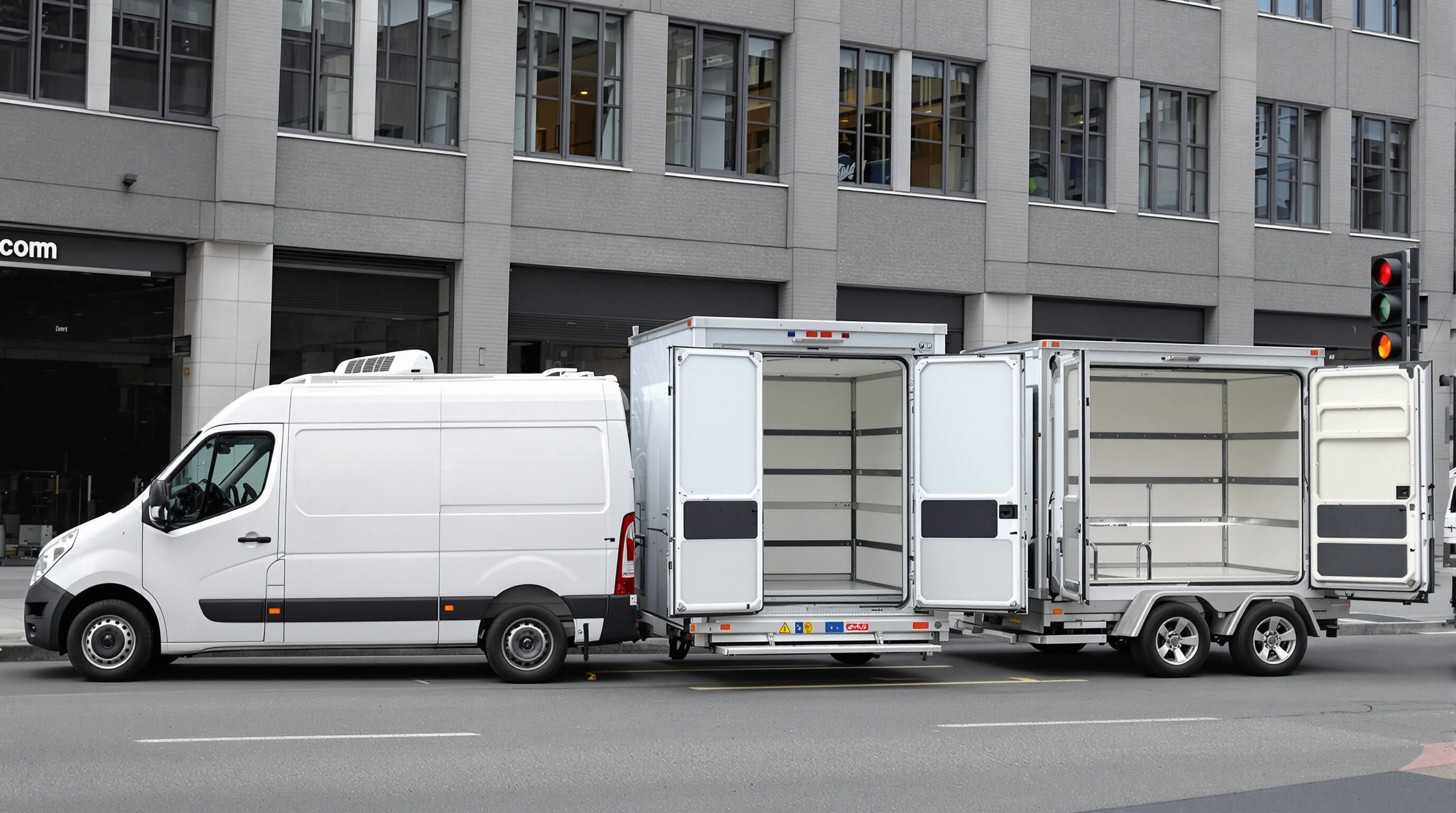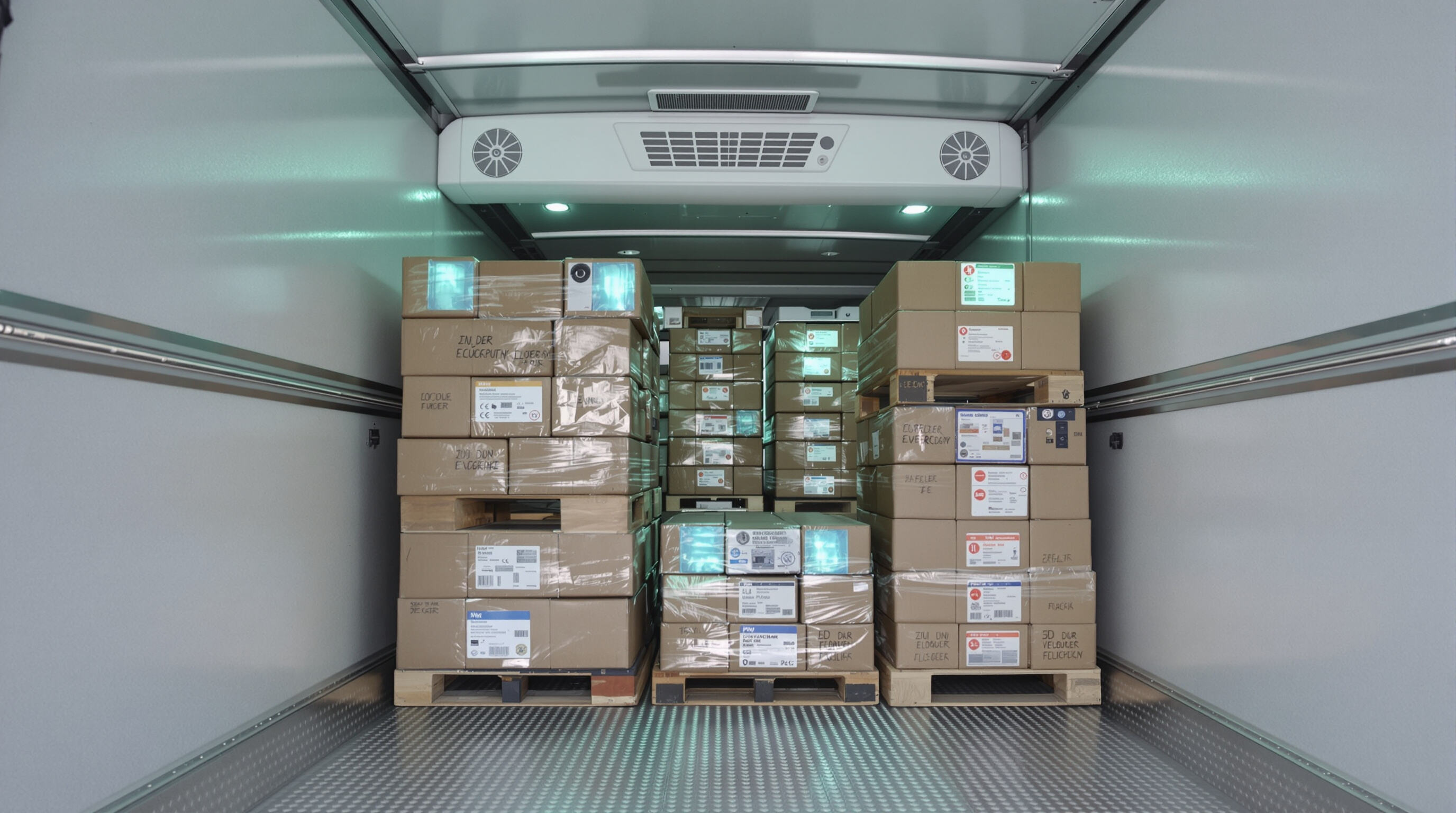Refrigerated Box Options in Small Truck Selection
Understanding Small Trucks with Refrigerated Box Configurations
What Defines a Small Truck with Refrigerated Box Capability
Refrigerated box trucks on the smaller side pack a lot into their compact frames, usually measuring around 14 feet long or less, yet still manage to include full temperature control systems. These little workhorses have been designed to carry quite a bit too, somewhere between 5,000 and 7,000 pounds worth of goods, all while keeping things cool at temperatures ranging from minus 18 degrees Celsius right up to 7 degrees Celsius thanks to those powerful compressors inside. What sets them apart from regular cargo trucks is how they're built. The walls contain this special polyurethane foam insulation rated anywhere from R-10 to R-14, plus there are these automated airflow systems that help maintain just the right climate conditions needed for transporting delicate items like fresh produce or frozen foods. And despite all this fancy equipment, these trucks remain surprisingly easy to handle in tight city streets.
Key Differences Between Refrigerated and Insulated Trucks for Small Payloads
Trucks that keep things cold have built-in cooling systems that control temperature inside, so they're really important when transporting frozen food stuffs or medicines that need specific conditions. Insulated trucks work differently though. They just depend on their thick walls to hold in the cold without any active cooling mechanism, which means they're only good for moving already chilled products over short distances. Take ice cream as an example. A proper refrigerated truck can keep it at around minus 18 degrees Celsius for about eight hours straight. But put the same ice cream in an insulated container with those blue gel packs? The temperature might creep up by roughly three degrees each hour, which could spoil everything if not monitored closely.
Common Applications of Refrigerated Box Trucks in Urban Logistics
Seventy-three percent of urban perishable deliveries use 12–14’ refrigerated trucks optimized for tight city routes, according to industry analysis. These vehicles are critical in three key sectors:
- Food distribution: Delivering fresh produce to restaurants with ±2°C tolerance
- Pharmaceuticals: Transporting vaccines requiring strict 2-8°C stability
- Floral logistics: Supporting multi-temperature zones for cut flowers (1-4°C) and tropical plants (10-13°C)
Their compact size reduces fuel consumption by 18–22% compared to full-sized reefers and meets 92% of last-mile cold chain demands.
Types of Refrigerated Trucks and Vans for Small-Scale Operations

Light-Duty Refrigerated Vans vs. Small Refrigerated Trailer and Truck Body Options
Refrigerated vans under 14 feet long are really good at navigating tight city streets and can carry around 4 to 6 standard pallets with weight limits hitting about 7,000 pounds. These smaller units work great for transporting perishables like fruits, veggies, and meds that need temperature control. When looking at bigger operations, small refrigerated trailers actually give about 20% more space for regional deliveries, though they do need heavier duty trucks classified as Class 3 through 5. The latest Cold Chain Logistics numbers from 2024 show something interesting too: nearly seven out of ten bakeries and flower shops have switched to using these compact refrigerated truck setups because they get roughly 12 to 14 miles per gallon even when stuck in all that stop and start city traffic.
| Size Range | Payload Capacity | Pallet Capacity | Optimal Use Cases |
|---|---|---|---|
| 12–14’ Vans | 5,000-7,000 lbs | 4-6 | Urban perishables, medications |
| 16–20’ Trucks | 10,000-13,000 lbs | 6-8 | Regional frozen goods, dairy |
Modular Refrigerated Truck Body Designs for Custom Small Truck Integration
Standard cargo vans can become USDA approved refrigeration units in just three days when equipped with modular refrigerated body systems. These setups come with cooling components that snap in and out, plus insulation made from two layers of foam material. The savings are pretty impressive too – businesses report cutting initial expenses down around 40% compared to buying fully built refrigerated trucks. What's even better? They keep temperatures steady between minus four degrees Fahrenheit all the way up to fifty degrees. Recent research looking at delivery fleets showed something interesting: companies using modular bodies saw their smaller trucks working harder throughout the year. About 29% more trips were possible because operators could simply swap out configurations seasonally. Think about it – same truck transports frozen desserts during hot months then switches to carrying fresh flowers right after winter thaws.
Critical Selection Factors for Small Trucks with Refrigerated Box Capability

Payload Capacity and Axle Load Limits in Small Refrigerated Box Trucks
Balancing cargo weight with structural limits is crucial. The 2024 Cold Chain Logistics Report indicates 37% of urban operators exceed axle load limits when using undersized refrigeration units. Always subtract the refrigeration unit’s weight (typically 400–800 lbs) from the GVWR to determine usable payload. For example:
| Cargo Type | Avg. Density | Max Payload for 10k GVWR Truck |
|---|---|---|
| Pharmaceuticals | 15 lbs/ft³ | 1,200-1,500 lbs |
| Fresh Produce | 8 lbs/ft³ | 2,800-3,200 lbs |
Distance Range and Fuel Efficiency in Temperature-Sensitive Cargo Transportation
Maintaining -20°F reduces fuel efficiency by 22–28% compared to 34°F, according to the 2024 Cold Chain Logistics Report. Small trucks equipped with multi-stage compressors achieve 14–18 MPG in urban routes, outperforming single-stage units (9–12 MPG). For daily 200-mile operations:
- Electric refrigeration is optimal for routes under 150 miles
- Diesel-powered units are necessary for distances exceeding 150 miles
Matching Cargo Type with Appropriate Refrigerated Box Specifications
Different cargo types demand specific temperature and airflow conditions:
| Cargo Type | Temp Range | Airflow Needs |
|---|---|---|
| Ice Cream | -20°F to -10°F | Horizontal airflow |
| Leafy Greens | 34°F to 38°F | Vertical airflow |
| Vaccines | 35°F to 46°F | Microclimate zones |
Total Cost of Ownership: Refrigerated vs. Insulated Truck Economics
Although refrigerated trucks have a $18,000–$35,000 higher upfront cost than insulated models, they reduce spoilage rates by 19–27%, according to the 2023 Fleet Efficiency Study. Key cost factors include:
- Refrigerated units: $0.38/mile maintenance
- Insulated units: $0.12/mile maintenance, plus $0.21/mile for ice or dry ice
Operators transporting temperature-sensitive goods over 150 miles weekly typically achieve ROI on refrigerated units within three years.
Maintaining Cold Chain Integrity in Small Refrigerated Box Trucks
Temperature Requirements for Transporting Perishable Goods in Small Reefers
Getting the temperature right matters a lot when working with small refrigerated trucks. Milk and dairy stuff generally need to stay around 34 to 38 degrees Fahrenheit. Fresh fruits and veggies have their own requirements too, usually somewhere between 40 and 50 degrees depending on what's being transported. If the temps go off track by even 2 degrees either way, things start going bad pretty fast. Take leafy greens for instance they can lose about a fifth of their shelf life every single hour once they get too warm. That's why newer refrigeration units come equipped with multiple zones these days. This means one truck can actually keep several different temperature settings at once, so perishables don't all have to share the same cold space.
Cold Chain Challenges in Perishable Agricultural Produce Transport
Agricultural logistics face significant challenges:
- 78% of post-harvest losses occur during transport (FAO 2023)
- Rural infrastructure gaps hinder reliable last-mile delivery
- Frequent door openings during multi-stop urban routes cause temperature fluctuations
To address these issues, farm-to-market operations increasingly pair refrigerated small trucks with portable cold storage hubs to maintain continuity in the cooling chain.
Reducing Post-Harvest Loss with Optimized Refrigerated Small Truck Logistics
Operators can reduce waste by 30–40% through:
- Route optimization software that minimizes transit time
- Staff training on proper loading techniques to ensure air circulation
- IoT temperature sensors that provide real-time alerts
Proactive maintenance of refrigeration units and door seals further ensures consistent thermal performance across delivery cycles.
Design and Operational Efficiency of Refrigerated Truck Bodies
Efficient design directly impacts cold chain integrity and operating costs, especially in small truck with refrigerated box configurations where space constraints amplify thermal management demands.
Innovations in Refrigerated Truck Body Design for Enhanced Thermal Performance
Computational fluid dynamics (CFD) modeling now guides airflow engineering, reducing energy waste by 15–20% (Transport Efficiency Journal 2023). Vacuum-insulated composite panels achieve R-values exceeding 6.5 per inch, preserving payload space while improving thermal retention. Integrated thermal breaks at structural joints minimize conductive heat transfer, lowering parasitic power draw and extending compressor lifespan.
Air Circulation and Loading Procedures to Maximize Cooling Efficiency
Effective cooling depends on evaporator placement and channeled ducting to prevent temperature stratification. Best practices include:
- Maintaining at least 4 inches of clearance between pallets and walls
- Stacking cargo from rear to front to preserve cold air return paths
- Using bottom-air-return configurations for palletized goods
These steps reduce compressor cycling by 25% and prevent hotspots in small vans transporting perishable agricultural produce.
Material Insulation Standards and Their Impact on Reefer Truck Performance
Compliance with EU EN 12672 and SAE J2450 standards ensures U-factor ratings ≤0.15 W/m²K. Third-party testing confirms that polyurethane insulation with ≥95% closed-cell structure offers superior moisture resistance. Trucks meeting these benchmarks demonstrate 8–12% lower annual fuel consumption, as verified in fleet energy audits.
Frequently Asked Questions
What is the typical size of a small refrigerated box truck?
Small refrigerated box trucks are usually about 14 feet long or less.
How much weight can small refrigerated box trucks carry?
These trucks can handle payloads between 5,000 and 7,000 pounds.
What is the difference between refrigerated and insulated trucks?
Refrigerated trucks have active cooling systems that maintain specific temperatures, while insulated trucks rely solely on their thick walls to keep cold air inside.
What types of goods require refrigerated truck transport?
Goods such as fresh produce, frozen foods, medicinal products, and flowers often need temperature-controlled transport.
How long can refrigerated trucks maintain ice cream temperature?
Refrigerated trucks can keep ice cream at around minus 18°C for about eight hours.

